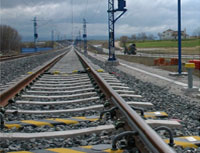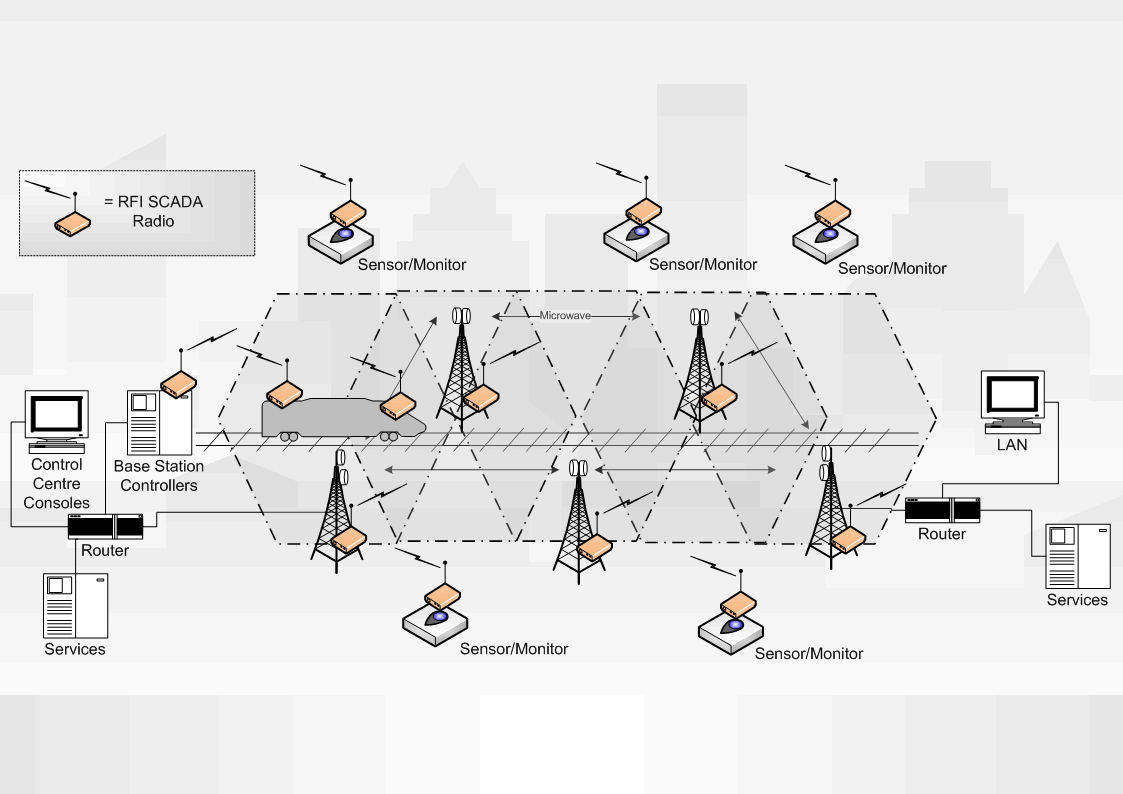Wireless Rail Corridor Communications

Rail operators are always on the lookout for new ways to increase haulage and services across their rail network and to ensure track and rolling stock conditions are adequately monitored to reduce the risk of incident. Radio communications has proven to be a cost effective alternative to hard-wired networks for rail operations and maintenance systems.
As GPS and mapping technology becomes more useable the rail industry is increasingly looking toward these technologies to implement train location, scheduling and protection systems.
These alternative methods of tracking and signaling, known as Communications Based Train Control (CBTC) or Automated Train Protection (ATP) systems, require low latency radio systems with high reliability and availability.
STI Engineering radios have been used as a part of a rail corridor system for the purpose of train control, location and monitoring systems. Licensed VHF and UHF data radios are specifically applicable to wide area long haul rail networks where large distances need to be covered between communications towers.
STI Engineering data radios are well suited to these applications with a robust design and data reliability features such as Forward Error Correction and selectable retries.
The radios can be used as part of a data communications system to provide wireless cellular coverage with mobile unit hand-over for continuous mobile access along the rail corridor. In systems with overlapped coverage, cellular handover can provide redundant coverage for both locomotives and wayside systems.
With the integration of a communications server the wireless network can allow seamless integration of logistics, operations and maintenance systems through shared infrastructure to relay information to and from the locomotive, receive information from wayside monitoring stations and control signal points and indicators.

Sharing the communication infrastructure with highly timing critical applications such as movement authorities and signal updates with less timing critical systems such as wayside detectors means the investment on the radio network can be fully realised over a number of different services within the rail corridor.
Systems such as truck hunting, dragging equipment and wheel impact load detectors, wheel profile, acoustic and hot wheel monitors are some of the wayside equipment that can benefit from a wide area data radio network to protect the rail assets from damage and to minimise the probability of derailment.
Common radio infrastructure means critical information can be relayed to the locomotive to take immediate action while non-critical maintenance information can be forwarded to the rail yards. This means information is presented in a timely fashion to where it is needed most.
Remote monitoring of equipment removes the reliance on verbal communication in non-signaled main track territory, where ground crews typically need to communicate whether switches are correctly or incorrectly aligned. Sensor and data radio based communications can essentially eliminate the need for verbal communication and lower the potential for human errors.
As opposed to the traditional track based signaling, the use of communications based signaling means the number of possible signal aspects is no longer limited by the physical characteristics of the track, it is possible to define a larger number of available aspects so additional information can be conveyed to the locomotive, such as work areas or temporary speed limits. This allows more flexibility in operation and increased system throughput.
Contact us for further information.